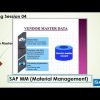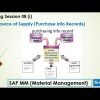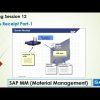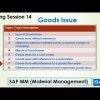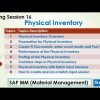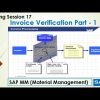This video provides a comprehensive guide on how to manage material master data in SAP MM. The video is divided into three parts, each covering a different aspect of the material master data maintenance process.
- Material Master Data Creation and Modification: The first part of the video focuses on the creation and modification of material master data. The speaker explains the different transaction codes used for creating, changing, and displaying material master data (MM01, MM02, and MM03 respectively). The video also covers the concept of material types and their attributes, the role of the industry sector in controlling screen and field selections, and the process of creating a material master. The speaker demonstrates how to create a material master for different types of materials like raw materials and packing materials, and how to assign attributes like material code, material description, and unit of measure.
- Organizational Units and MRP Profiles in Material Master Data: The second part delves deeper into the organizational units of material master data and the concept of extending the material master. The speaker explains how some data is applicable at the client level, while other data is specific to the plant level. The process of extending the material master to other organizational units is also demonstrated. The speaker also introduces the concept of MRP profiles and how they can be used to save time when creating material masters. The video also covers the process of mass maintenance of material master data using the MM17 transaction code.
- Reports and Mass Changes in Material Master Data: The final part of the video covers the use of reports in material master data maintenance. The speaker demonstrates how to use the MM60 report to view all materials at the plant level or by material type. The video also covers the use of the MMS2 transaction code for mass changes to material master data. The speaker also explains how to use the “Find” function to search for specific fields in the material master data.






